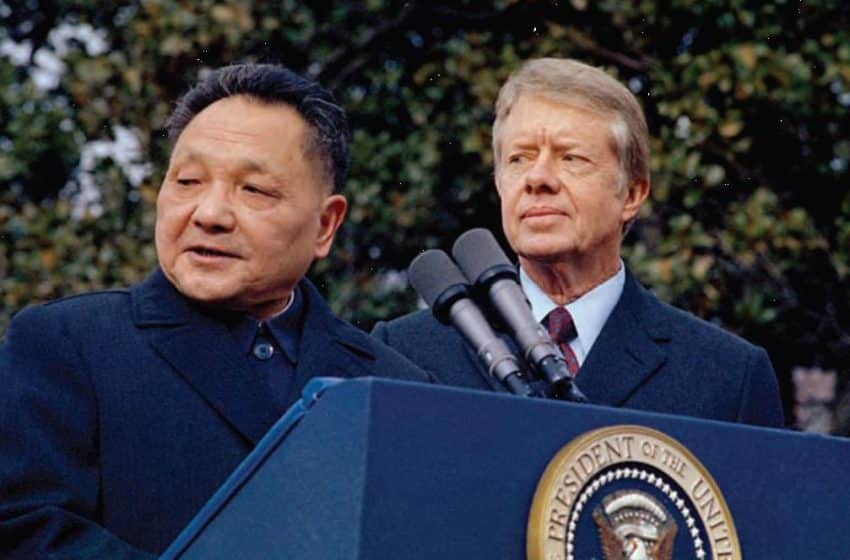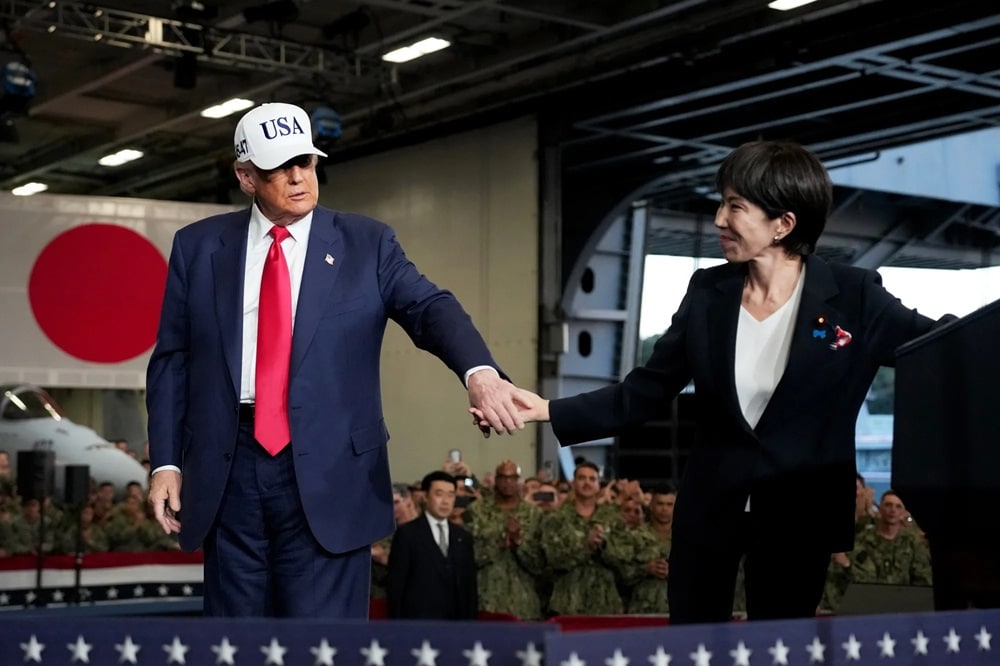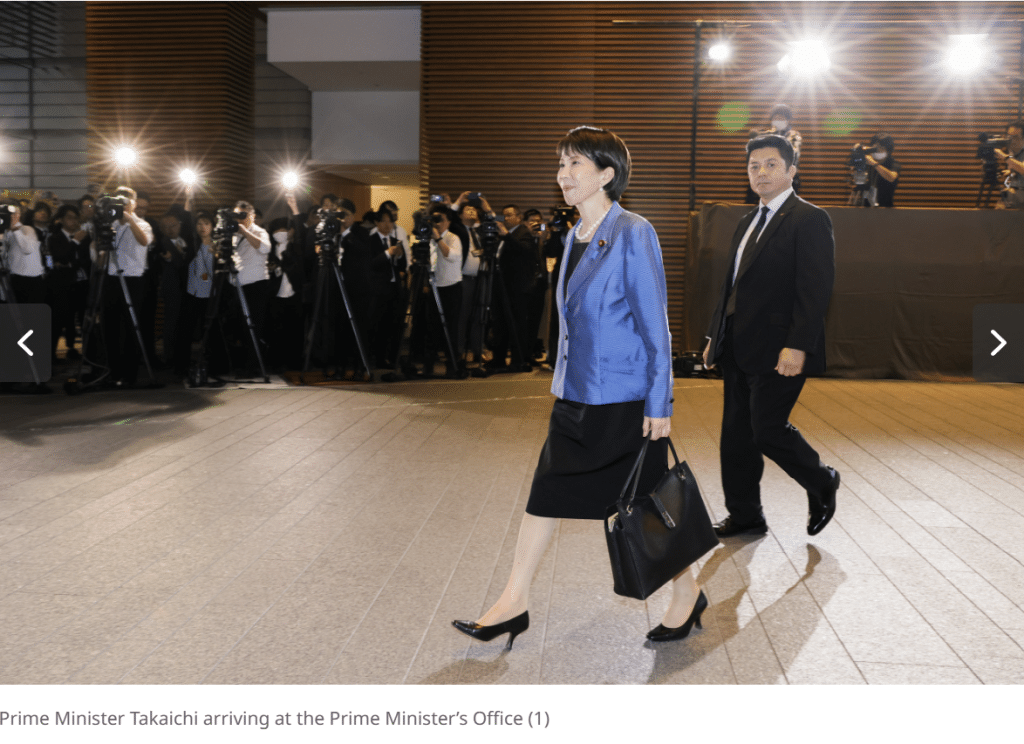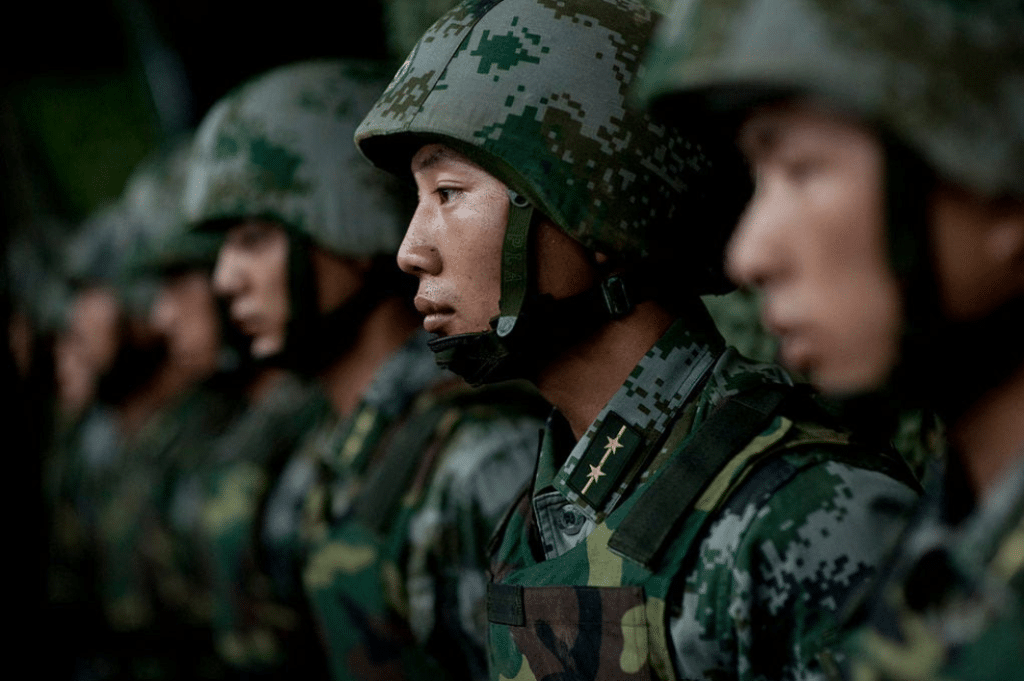Who is Hu Xijin?

Illustration by Noodleshoop.
Who is
Ren Zhengfei
?
Everything you need to know about the founder and CEO of Huawei.
Background
- Current Role
- Work History
- Education
Ren Zhengfei (任正非, Rén Zhèngfēi) is the founder and CEO of Huawei, one of China’s leading providers of information and communication technology infrastructure and devices.
With Huawei at the forefront of next generation technology such as 5G, Ren is a key figure behind technology infrastructure development worldwide. His drive and motivation propelled Huawei from a struggling startup to one of China’s most successful “national champions.”
Ren’s status worldwide, however, is largely overshadowed by continued distrust from Western governments about the security of Huawei technology.
Skip to Ren’s full background.
After graduating from university, Ren worked as a civil engineer before joining the People’s Liberartion Army (PLA) Engineering Corps in 1974. During his military career, Ren worked as a technician, an engineer, and lastly as a Deputy Director.
After the PLA Engineering Corps was disbanded in 1983, Ren retired from engineering. He established Huawei Technologies from his apartment in Shenzhen in 1987. He has since served as Huawei Technologies’ Chief Executive Officer.
In 1963, Ren attended the heating, ventilation, and air conditioning program at Chongqing Institute of Civil Engineering and Architecture, where he graduated with a bachelor’s degree.
Timeline
Birth Year
Ren Zhengfei is born.
Ren is born in rural Zhenning County, Guizhou.
Education
Ren attends university.
Ren studies at the Chongqing Institute of Civil Engineering and Architecture.
Work History
Ren serves in the military.
Ren joins the People’s Liberation Army (PLA) as an engineer until 1983, when the Engineering Corps was disarmed and disbanded.
Personal History
Ren visits the U.S.
Ren’s first trip to the United States in 1984 was a formative experience, which he wrote about in an essay titled Notes from a Trip to America in 1994.
Work History
Ren founds Huawei.
Ren founds Huawei with only 5,600 USD pooled by himself and five other individual investors in a small apartment in Shenzhen. He has continued to serve as the company’s CEO.
Ren Zhengfei:
‘To Boldly Go Foward’
One of seven children, Ren Zhengfei was born in rural Zhenning County, Guizhou in 1944. Born to two school teachers, Ren’s family endured great hardship during the Cultural Revolution. His father was targeted and jailed due to his supposed anti-proletarian sentiments. Restrictions on the education system also prevented his other siblings from attending university. Despite these hardships, Ren acknowledges the personal growth that resulted from his experience with the “painful ordeal” of the Cultural Revolution. “In retrospect, the material hardships, as well as the mental trials and tribulations, were an opportunity for us to get mature later in our lives,” he reflected in a 2001 article titled My Father and Mother, “It was a baptism of life for us, making me mature politically and I was no longer a book nerd.”
“The hardship of life at that time was bearable, the mental suffering was much worse than the physical pain. Because my father was being investigated, my younger siblings were denied admission to school again and again, and the loss to them in that era was the inaccessibility to higher education.”
The only child in his family to attend university, Ren studied at the Chongqing Institute of Civil Engineering and Architecture in 1963. After graduation, he was employed in the civil engineering industry before joining the People’s Liberation Army (PLA) as an engineer in 1974. Although his goal was to become a lieutenant-colonel in the PLA, his father had been labeled a “capitalist roader” during the Cultural Revolution, which at first dashed Ren’s hopes of joining the Chinese Communist Party (CCP). However, Ren’s fortunes began to shift in 1976 with the fall of the Gang of Four. “All of a sudden, [I was called] ‘standard-bearing, meritorious ….’ The PLA’s and civilian authorities’ recognition came like sea waves,” Ren recalls. Due to his leadership and commendation by his superiors, Ren was invited to attend the 1978 National Science Congress as one of 6,000 delegates. This recognition also convinced the Party branch of the PLA to help Ren become a Party member and rehabilitate his father. Later, in 1982, Ren had the opportunity to attend the 12th National Congress of the Party as a reward for exemplary military service. During his military career, Ren had taken positions as a Technician, an Engineer, and lastly as a Deputy Director, a professional role equivalent to a Deputy Regimental Chief, but without military rank. In 1983, the Chinese government disbanded the Engineering Corps as part of the Great Disarmament, and Ren retired.
After leaving the PLA, Ren struggled with civilian life. In his essay titled My Father and Mother, Ren recalls how he struggled to navigate China’s new commodity economy: “At first, I was a manager at an electronics company, and I suffered a setback because I was cheated by others.” He also briefly worked for an oil company before founding Huawei in 1987.
From a Shenzhen Apartment to a Leading Telecom Company
At 44, Ren started Huawei with only 5,600 USD pooled by himself and five other individual investors in a small apartment in Shenzhen in 1987, one of many young companies seeking a foothold in China’s newly opened market economy. “I founded Huawei when China began to implement its reform and opening up policy,” Ren recalled in a BBC interview, “At that time, China was shifting from a planned economy to a market economy. Not only people like myself, but even the most senior government officials, did not have the vaguest idea of what a market economy was. It seemed hard to survive.”
Still learning to navigate China’s Reform and Opening Up policy, new startups like Huawei had to compete against China’s state-owned enterprises and multinational corporations such the Swedish Ericsson. The budding company initially resold affordable telecom switches created by a Hong Kong company to Chinese hotels. Despite the small success Huawei achieved through these operations, the Hong Kong company suddenly revoked their license, forcing Huawei to innovate quickly or fail. “At that time, we had no other options. We didn’t think about what would happen if we failed; we were quite confident that we could succeed.”
In 1990, Huawei started its own research and development (R&D), focusing on the rural market. Ren was heavily influenced by his observations of U.S. companies and the key role R&D played in their success. In a 1994 article published in Huawei’s internal newspaper titled Notes from a Trip to America, he recounts the transformative experience. “It was an eye-opener to the development of the computer industry internationally. We found the feeling that our computer industry would go down, and that if we do not put everything into developing the technology, we will eventually lose all the market.” After his trip, Ren made the key decision to hire consultants from top U.S. technology companies to help Huawei prepare for the future. IBM was one such company, and they provided technology for Huawei’s routers and optical-transmission systems and also set up a joint R&D effort. This collaboration helped speed up Huawei’s product development and relationships with Europe. Charles Ding, Huawei’s senior vice president for the U.S. at the time, said the company had worked closely with IBM since 1997, and that without IBM, “we could not have had the Huawei of today.”
“[Visiting the U.S.] was an eye-opener to the development of the computer industry internationally. We found the feeling that our computer industry would go down, and that if we do not put everything into developing the technology, we will eventually lose all the market.”
In 2000, the company expanded overseas, albeit slowly. “During our first years in overseas markets, we had no opportunity to meet with customers,” Ren recalls. Building on their experience targeting often ignored markets within China, the company entered markets in Africa, the Middle East, and South Asia, trying to earn customer recognition. Eventually, Huawei landed in the European market, working with companies such as Vodafone and British Telecoms. During this time, Ren emphasized the importance of strong R&D and new innovations in technology, mandating that a minimum of 10% of revenue needed to be spent on R&D. According to annual reports, Huawei is the third largest spender of R&D in the world, spending 22.04 billion USD, or 15.9% of its total revenue in 2020.
To achieve rapid innovation, Huawei follows a business model which Ren describes as “Van Fleet Load,” an invention from the U.S. army: “We invest heavily in our focus area. At first, this focus approach let us start pulling ahead of our Western peers in a given area. And then, once we had established some market presence, we began to build up capital. But our strategy of focused investment never changed as our capital grew. We remained focused on this same single point. Gradually, we have become a leader in this narrow, focused area.”
By the time 4G emerged, Huawei had become a global leader in telecommunications equipment. In three decades, Ren built Huawei into the world’s largest telecommunications company, reporting a revenue of 123 billion USD in 2019. The company operates in 170 countries with approximately 197,000 employees, and they serve more than three billion people. Huawei grew to embody China’s long-term goals of transitioning from cheap manufacturing to high-tech production and expanding their influence abroad, earning its rank as a Chinese “national champion,” a firm that is a domestic leader in their respective industries.
Ren has been described as more of a spiritual leader than a hands-on executive. His management of the company is heavily influenced by the childhood hardship he endured during the Cultural Revolution and the military values instilled in him during his 6 years in the PLA. He takes pride in overcoming his past challenges and acknowledges the impact they have had on his success. “Nobody can develop a thick skin without scars,” he said in an interview with the LA Times. Ren leverages that same tenacity and drive to run the company, and encourages his workers to do the same. Like many influential figures, Ren often uses Chinese idioms in speeches to Huawei employees, most famously in 2020 when he urged them to “surge forward, killing as you go, to blaze us a trail of blood.” While Western media jumped to misinterpret Ren’s words, a more accurate understanding of his words was expressed in a recent article by Zichen Wang and Yang Liu, who stated that, in reality, Ren was calling for the company to survive the extreme pressure campaign mounted on it by the United States government. Huawei is known for describing its corporate culture as a “wolf culture,” expecting the employees to act with the same intensity of a wolf pack. Huawei employs individuals who are hungry for success, strive for top-notch innovation, and are willing to make the sacrifice for the good of the company. This culture is by no means for everyone. In total, 300,000 to 400,000 people have joined Huawei, but only around 180,000 people decided to stay.
Huawei and the Chinese Government
In light of Ren’s stunning success at building Huawei from the ground up, many foreign governments and telecommunication companies have expressed concerns about Huawei’s transparency with regards to its financials and its support from the Chinese government. The United States, in particular, contends that the company could not have achieved its success today without the aid of the Chinese government. Indeed, state support extending back to the early years of the company has allowed Huawei to survive and succeed competitively around the world. Although Ren claims Huawei “didn’t receive a single penny from the government,” the Shenzhen Municipal Chinese Communist Party Secretary Li Youwei and Shenzhen Construction Bank President Hui Xiaobing provided financial support to Huawei in 1996. As Li Youwei recounted in a 2019 interview: “When Ren Zhengfei started his business, he had only a dozen people in his team. At that time, they had technology, products and markets, but no capital, loans, guarantees or mortgages. After I organized an inquiry, I asked Hui Xiaobing, President of the Shenzhen Construction Bank, to look into Huawei and President Hui decided to lend Huawei 30 million yuan.”
The turning point for Huawei came in 1996, when Beijing began to explicitly support domestic telecoms companies to prevent foreign domination of China’s equipment industry. Huawei was touted as a national champion, and provided RMB 50 million by state Vice-Premier Wu Bangguo to develop GSM mobile phone technology. State financing didn’t stop there. In 1998, the China Construction Bank provided Huawei with RMB 3.9 billion in buyer’s credit, and the next year, the company received another boost of RMB 3.5 billion from ICBC and the Bank of China. Huawei received a $10 billion credit line with the China Development Bank (CDB) in 2004 to provide low-cost financing to customers buying its telecom gear, which was subsequently tripled to $30 billion in 2009.
In an April 2019 interview with CNBC, Ren responded to skepticism regarding Huawei’s connections to the Chinese state stating, “Huawei is based in China. So firstly, we must abide by Chinese laws and regulations. Secondly, we need to pay taxes to the Chinese government. Our relationship with the Chinese government is primarily defined by these two points… Our financial statements are audited by KPMG, which can clearly show whether or not we are supported by the Chinese government. KPMG wouldn’t hide anything for us. We have become what we are today with our own strength.”
However, a 2019 Wall Street Journal review of Huawei’s grants, credit facilities, tax breaks and other forms of financial assistance found Huawei had access to as much as $75 billion in state support to grow into the company it is today. About $46 billion comes from loans, credit lines and other support from state lenders, along with $1.6 billion in grants and $2 billion in land discounts, the Journal’s review showed. Further, the company saved as much as $25 billion in taxes between 2008 and 2018 due to state incentives to promote the tech sector. In 2018, Huawei also received $222 million in government subsidies. The state’s support has enabled Huawei to offer enticing financing terms and undercut competition prices by 30%.
Huawei has steadfastly denied U.S. allegations that it receives special funding from Beijing. To make their case, the company had their external law firm engage a financial expert to review Huawei’s finances. The review was conducted by Dr. Wei Jiang, a professor of finance at Columbia University Graduate School of Business and a Senior Fellow at the Program on Corporate Governance at Harvard Law School. She concluded that the financial benefits Huawei received from the Chinese government are “proportionally in line, once adjusted for size, with what global competitors like Nokia, Ericsson, Cisco, or Alcatel-Lucent get. These benefits include tax breaks, bank loans or credit facilities, and direct government grants.” Further, “Huawei primarily relies on the cash flow generated from its own business operations, meaning that the company would be fine without any external financing.”
Then, there is the question of who owns Huawei. According to the Huawei website, they are “an independent, privately-held company… not owned or controlled by, nor affiliated with the government, or any other 3rd party corporation. In fact, Huawei is owned by our employees… and as of 2018 there were 96,768 shareholding employees. Our founder, Ren Zhengfei, owns a 1.14% stake in the company.” The Employee Stock Ownership Plan (ESOP) is managed by an entity called Huawei Investment & Holding Company Trade Union. According to the chief secretary of Huawei’s board of directors, Jiang Xisheng, the program essentially allows workers to own a kind of virtual Huawei stock which lets employees share in the company’s financial success or loss. Further, they entitle their holders to elect members to Huawei’s Representatives’ Commission, which in turn elects members of the board of directors.
In April 2019, Christopher Balding, a former professor at Fulbright University Vietnam, and Donald C. Clarke, a professor at George Washington University Law School, published their influential article Who Owns Huawei? According to their findings, Huawei consists of an operating company called Huawei Technologies, Inc. and another entity called Huawei Investment & Holding Co., Ltd. The first of these, Huawei Tech, is a single-shareholder limited liability company and is 100% owned by Huawei Holding. According to Balding and Clarke, Huawei’s virtual stock program is “purely a profit-sharing incentive scheme,” and they concluded Huawei is “neither employee-owned nor employee-governed, and the question remains as to who actually does govern or control Huawei other than Ren Zhengfei.”
Ren, Huawei, and American Mistrust
Huawei’s incredible rise with Ren at the helm has not gone without scrutiny, especially in the United States. The U.S. insists the company is a creation of the Chinese government with the intention of gaining intelligence and influence abroad. In addition to concerns about Chinese government influence through Huawei, the United States has accused Huawei of theft, espionage, poor business practices, and threatening national security over the past two decades.
Huawei’s history is littered with accusations of trade secret theft. Most famously, a 2003 lawsuit filed by Cisco accused Huawei of violating at least 5 patents and copying Cisco’s operating system source code. The lawsuit was settled in 2004 after Huawei agreed to change its source code and stop using some technology. Another notable accusation of fraud emerged in 2019, when prosecutors alleged Huawei employees stole T-Mobile trade secrets in 2012, stating Huawei pressured U.S. staff to acquire details about Tappy, a smart-phone-testing robot.
Under the Trump administration, accusations and actions against Huawei have increased substantially, particularly over national security concerns. In recent years, this fear has risen tenfold due to China’s two national security laws, the 2015 National Security Law and the 2017 National Intelligence Law. Both detail the obligations of Chinese companies and citizens to support the state in maintaining national security. The National Intelligence Law in particular declares that Chinese companies must “support, assist, and cooperate with” China’s intelligence work.
These new fears build on past warnings given by the U.S. intelligence community. A 2012 U.S. House Permanent Select Committee on Intelligence report concluded that Chinese telecommunications companies such as Huawei with potential ties to the Chinese government or military presented a potential security threat. During a 2018 hearing with the Senate Intelligence Committee, intelligence chiefs expressed similar sentiments about the danger Huawei poses. “We’re deeply concerned about the risks of allowing any company or entity that is beholden to foreign governments that don’t share our values to gain positions of power inside our telecommunications networks,” FBI Director Chris Wray testified. The senate hearing introduced multiple actions to limit Huawei’s influence including banning the sale of Huawei products on military bases. The Federal Communications Commission also released proposed rules barring U.S. companies receiving government subsidies for telecommunications equipment from buying from “any company that poses a national security threat.”
The government’s actions against Huawei culminated in a 2019 executive order signed by President Trump declaring a national emergency and barring U.S. companies from using telecommunications equipment made by firms posing a national security risk, including Huawei. The trade ban was softened by the Commerce Department creating temporary general licenses that would allow Huawei to continue business while companies sort out long term solutions to the order. However, fresh sanctions on Huawei in 2020 dealt another blow. These sanctions restrict any foreign semiconductor company from selling chips developed or produced with U.S. software or tech to Huawei without a license, essentially cutting the company off from vital supply lines.
Huawei and Ren Zhengfei continue to deny the allegations of the United States, stating the company’s commitment to security. “No law requires any company in China to install mandatory back doors. I personally would never harm the interest of my customers and me, and my company would not answer to such requests,” Ren told international press at the Huawei headquarters in 2019. He further emphasized the importance of Huawei’s customers stating, “When it comes to cybersecurity and privacy protection we are committed to be sided with our customers. We will never harm any nation or any individual.”
Huawei’s troubles with the United States and dominance in 5G place the company at the center of a major battlefield playing out in the rising U.S.-China tensions dubbed the “Digital Iron Curtain.” Huawei is at the forefront of the next generation of mobile broadband technology: 5G, which will require new infrastructure to work efficiently. Unlike 4G, the new wireless generation will rely heavily on software created by telecommunications providers such as Huawei. This reliance on Huawei to maintain the network is a key component of the mistrust the United States and its allies have in Huawei’s 5G dominance, and officials have argued that it is impossible to trust a supplier like Huawei who is at the mercy of a political system that can demand firms to follow political needs.
The U.S. has pressured its allies to unite and address the challenge posed by Huawei, even issuing a warning that if Huawei has access to a country’s 5G networks, they might be blocked from sharing intelligence with the U.S. So far, at least 8 countries, all of who are close U.S. allies, have issued bans on Huawei’s 5G infrastructure, including Australia, Japan, and the United Kingdom. Some U.S. allies, such as France or India, have begun the process of phasing out Huawei technology from their networks, while others have simply turned to alternative sources for 5G such as Ericsson or Nokia.
While Europe and North America appear to be in some agreement about the potential dangers of using Huawei technology, the same cannot be








